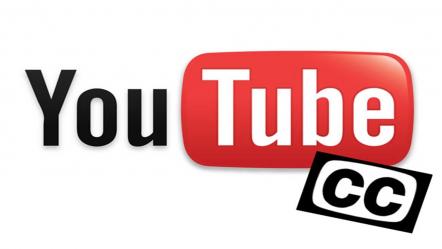New York, NY (Top40 Charts) Captions are an added benefit for most YouTube videos. Sometimes, they are instrumental in understanding the speech, especially when the latter is hard to discern due to a hostile recording environment. Subtitles also enable people with hearing disabilities to get access to the content of the video. They can also greatly improve comprehension for people who don't speak the same dialect of a given language or when the speaker has a strong accent, but also for people who haven't yet acquired a perfect knowledge of the language. Finally, captions can be offered in multiple languages, which can expand tremendously the potential audience of a given video.
5 Methods to Transcribe a YouTube Movie
Nowadays, creating captions for videos is greatly aided by the automatic features available on YouTube and offered by other specialized programs. These methods are typically combined with manual editing to obtain the best results. Below we list some of the most popular methods to create captions for YouTube videos:
- Use YouTube's automatically generated captions. The process of generating these captions uses machine learning algorithms but the results are typically poor. Despite the fact that this solution requires the least amount of effort and can be activated with a few clicks, YouTube recommends that professional captions are used instead. One particular advantage of this method is that it is suitable for transcribing livestream videos (only in English).
- Edit the captions automatically generated by YouTube right on the website, in the browser window. First, go to the subtitles section and click on the option for auto-generated subtitles in order to access them. You'll open a transcript containing a series of time intervals and the corresponding text that will appear on the screen during each time interval. Just follow along with the video and the transcript simultaneously and correct any mistakes or rewrite phrases as needed (sometimes, one also wants to eliminate occasional errors or introduce some clarity). This is by far the easiest way to create professional captions.
- Download and edit the transcription file. Access the automatically generated transcript as before (ensuring that the appropriate language is selected) and choose to download the subtitles in any of the formats available (.vtt, .srt, .sbv). After the transcript file is edited and saved, upload it back to YouTube as new subtitles for your video.
- Write the captions from scratch. In theory, it is possible to write the transcript file from scratch, but this implies being familiar with the exact format of the captions file (in particular, the format of the timings, delimiters, etc.). In practice, typing the time intervals manually could be an incredible waste of time, so it is wise to get assisted by software. One option is to create these files with specialized software, while an even easier way is to just write all the text you hear in the video (without any timings), upload this text to YouTube, and choose to create the timings automatically using YouTube's auto-sync feature as described in this guide. This feature automatically lines up the text with the speech.
- Recruit somebody to transcribe your video and send you the subtitles in the requested file format. This is also the preferred option when you need the subtitles translated into any other language as you can accomplish both tasks with a single request. Just make sure to choose the best online translation service so that you have no doubts about the quality of translation you get. Note that video transcription services are already offered routinely by most translation websites and even those who don't advertise this will likely adapt to your request. These translation services use specialized transcription software, which can improve productivity.
Check out this guide from the Office of Information Technology of the University of Colorado Boulder for more information on how transcripts are created, including the stages involved, what programs are used in the process, as well as for guides on how to create captions for YouTube videos (find the links at the bottom of the page). Many of the tools suggested are universal, hence, it could be equally useful to transcribe files for other platforms. In fact, if you do transcriptions frequently for different platforms, this might be the preferred way, since this will allow working on different projects from the same user interface.
Final Thought
YouTube greatly simplifies the process of transcribing your videos offering automated tools that can greatly reduce the amount of effort and time needed. In general, one doesn't need any third-party software to be able to create YouTube transcripts efficiently. Neither does one need to spend incredible amounts of time working in a text editor. YouTube can either take care of the entire process or can provide significant shortcuts, as with auto-generated captions that can be used as a starting point to create professional captions, or by matching the text with manually typed captions (eliminating the need to manually write the timings). All these, enable a flexible and efficient approach to transcription.
Author's Bio
Mark has acquired valuable experience with diverse content writing platforms, especially those in the SEO industry and in education. He often focuses on particular niches in these fields and describes the workflows that content writing platforms follow, the technologies and tools they use, their client base, etc. Mark also makes predictions about the evolution that these platforms are likely to undergo.





















